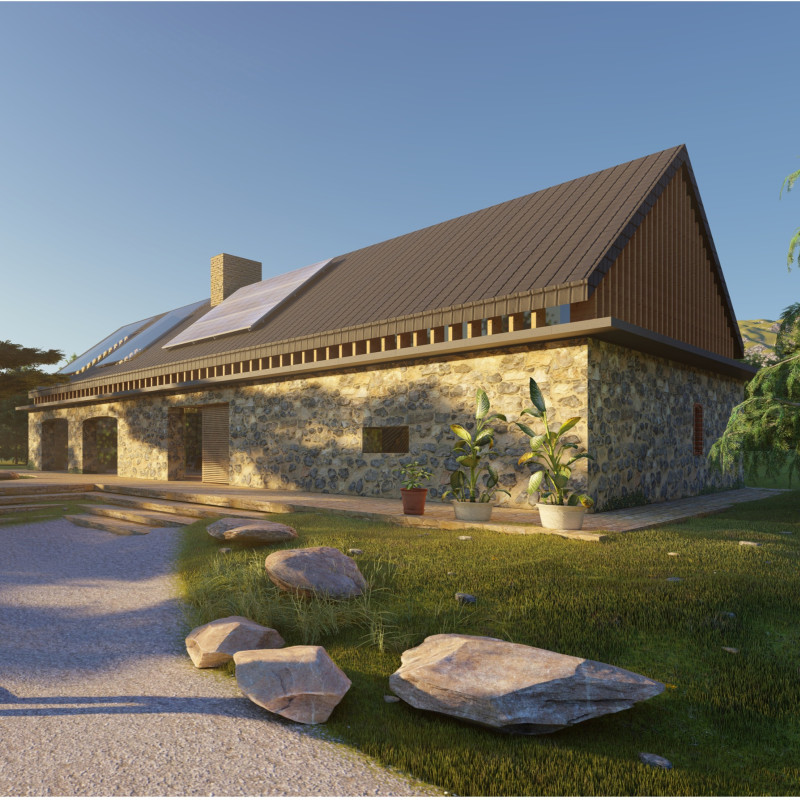5 key facts about this project
The sanctuary operates primarily as a wellness retreat, offering spaces for meditation, relaxation, and community interaction. It focuses on promoting mental and emotional health through thoughtful spatial arrangements and material choices. The project is characterized by its integration of the four classical elements: earth, air, water, and fire, which serve as guiding principles for both the architectural form and the occupant experience.
Unique Design Approaches
One notable aspect of the Ozolini Organic Sanctuary is its commitment to incorporating local materials, such as stone and wood, which contribute to its organic aesthetic and sustainability goals. The use of locally sourced materials not only minimizes the carbon footprint of the project but also creates a strong connection with the surrounding landscape.
The architectural design features a dual-pitched roof, clad in dark tiles, which respects traditional rural aesthetics while adding modern functionality through the integration of solar panels. This innovative approach to energy efficiency positions the sanctuary as a forward-thinking project aligned with contemporary environmental standards.
The interior layout is designed to maximize natural light and airflow, utilizing large windows and glass walls that dissolve boundaries between indoor and outdoor spaces. The central living area, accentuated by a fireplace, serves as a communal gathering point, fostering social interaction and shared experiences among visitors.
The sanctuary includes diverse seating areas and relaxation zones, enhancing the options for social engagement or private reflection. The careful arrangement of space facilitates a fluid transition between various functions, encouraging users to engage deeply with both the architecture and the surrounding nature.
Sustainable Features
Beyond aesthetics, the sanctuary emphasizes sustainability through innovative design strategies. The incorporation of solar panels enhances energy efficiency and reduces operating costs. Rainwater harvesting systems, along with green landscaping techniques, contribute to resource conservation.
The careful selection of natural materials, in combination with energy efficiency innovations, reflects a broader commitment to environmental stewardship. This project embodies architectural ideas that prioritize not only user experience but also ecological responsibility.
The Ozolini Organic Sanctuary represents a thoughtful synthesis of architecture and nature, emphasizing sustainability, wellness, and community. To gain a comprehensive understanding of this project, including its architectural plans, sections, and designs, readers are encouraged to explore the detailed project presentation further. By examining these elements, one can gain deeper insights into the innovative architectural ideas that shape this unique sanctuary.


























